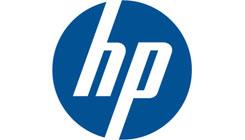 Before filing its 10-K on December 27, HP insisted it spin-offs weren't on the table. In early December, a spokesman assured Bloomberg that it was “committed to keeping our businesses and assets together.” But in the 10-K, the company said it was continuing to "evaluate the potential disposition of assets and businesses that may no longer help us meet our objectives." In the midst of a multi-year turnaround plan, the company ended its 2012 fiscal year with 331,800 employees worldwide, 17,800 fewer than in fiscal 2011. It’s not clear how many of those jobs were cut as part of its announced plans to shed the to shed 29,000 positions over the next two years.
Before filing its 10-K on December 27, HP insisted it spin-offs weren't on the table. In early December, a spokesman assured Bloomberg that it was “committed to keeping our businesses and assets together.” But in the 10-K, the company said it was continuing to "evaluate the potential disposition of assets and businesses that may no longer help us meet our objectives." In the midst of a multi-year turnaround plan, the company ended its 2012 fiscal year with 331,800 employees worldwide, 17,800 fewer than in fiscal 2011. It’s not clear how many of those jobs were cut as part of its announced plans to shed the to shed 29,000 positions over the next two years.
If HP Sells Units, These Jobs Could Be at Risk
Hewlett-Packard's statement that it is considering the sale of some unnamed units has undoubtedly made employees queasy. You could chock up the notion of divestiture to the rumor mill if it wasn't for the fact that HP's statement appeared in a December filing with the SEC.  Before filing its 10-K on December 27, HP insisted it spin-offs weren't on the table. In early December, a spokesman assured Bloomberg that it was “committed to keeping our businesses and assets together.” But in the 10-K, the company said it was continuing to "evaluate the potential disposition of assets and businesses that may no longer help us meet our objectives." In the midst of a multi-year turnaround plan, the company ended its 2012 fiscal year with 331,800 employees worldwide, 17,800 fewer than in fiscal 2011. It’s not clear how many of those jobs were cut as part of its announced plans to shed the to shed 29,000 positions over the next two years.
Before filing its 10-K on December 27, HP insisted it spin-offs weren't on the table. In early December, a spokesman assured Bloomberg that it was “committed to keeping our businesses and assets together.” But in the 10-K, the company said it was continuing to "evaluate the potential disposition of assets and businesses that may no longer help us meet our objectives." In the midst of a multi-year turnaround plan, the company ended its 2012 fiscal year with 331,800 employees worldwide, 17,800 fewer than in fiscal 2011. It’s not clear how many of those jobs were cut as part of its announced plans to shed the to shed 29,000 positions over the next two years.
 Before filing its 10-K on December 27, HP insisted it spin-offs weren't on the table. In early December, a spokesman assured Bloomberg that it was “committed to keeping our businesses and assets together.” But in the 10-K, the company said it was continuing to "evaluate the potential disposition of assets and businesses that may no longer help us meet our objectives." In the midst of a multi-year turnaround plan, the company ended its 2012 fiscal year with 331,800 employees worldwide, 17,800 fewer than in fiscal 2011. It’s not clear how many of those jobs were cut as part of its announced plans to shed the to shed 29,000 positions over the next two years.
Before filing its 10-K on December 27, HP insisted it spin-offs weren't on the table. In early December, a spokesman assured Bloomberg that it was “committed to keeping our businesses and assets together.” But in the 10-K, the company said it was continuing to "evaluate the potential disposition of assets and businesses that may no longer help us meet our objectives." In the midst of a multi-year turnaround plan, the company ended its 2012 fiscal year with 331,800 employees worldwide, 17,800 fewer than in fiscal 2011. It’s not clear how many of those jobs were cut as part of its announced plans to shed the to shed 29,000 positions over the next two years.


